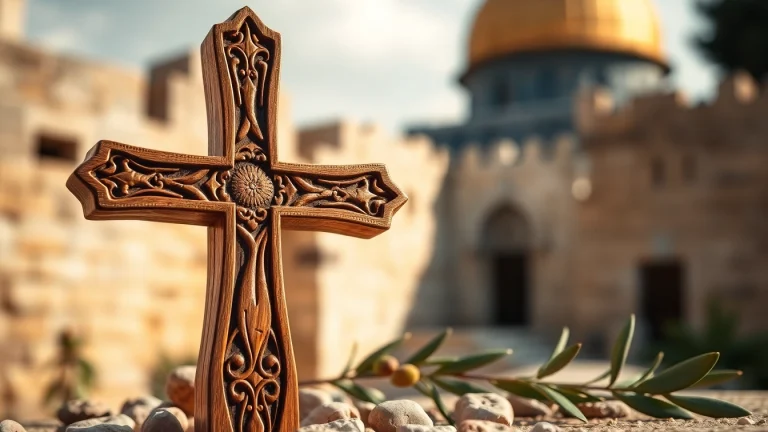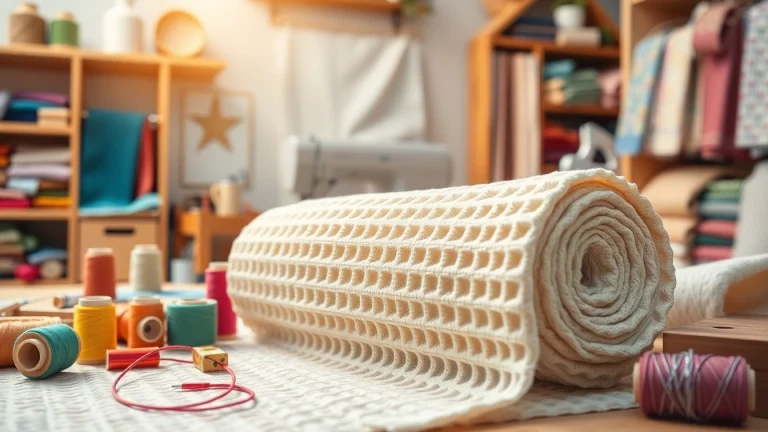
Understanding the Symbolism and Heritage of Jerusalem Crosses
The Historical Significance of Jerusalem Crosses
Origins and Cultural Context
The Jerusalem cross, a heraldic emblem and variant of the Christian cross, encapsulates a rich tapestry of history and spirituality that dates back centuries. This symbol consists of a large central cross potent, surrounded by four smaller Greek crosses, one positioned in each quadrant. Traditionally, it is believed to have originated in the context of the 11th century during the Crusades when it was adopted as a symbol of the Crusader Kingdom of Jerusalem.
The cross’s historical roots are deeply anchored in the Christian faith, with its appearance common in various forms of religious art and architecture throughout the ages. Its design not only signifies the Christianity’s foothold in the Holy Land but also acts as a reminder of the quest for sanctity and liberation associated with the Crusaders’ journey. Today, it occupies a significant place within both liturgical contexts and as an item of personal devotion.
Symbolism of the Five Crosses
The Jerusalem cross is rich in symbolism, with each of the five crosses representing major theological concepts. The central cross symbolizes Christ and His sacrifice, while the four smaller crosses are traditionally associated with the Four Evangelists: Matthew, Mark, Luke, and John. This representation not only emphasizes the biblical foundations of Christianity but also serves as a graphical depiction of the four corners of the earth, thus signifying the spread of the Gospel to all nations.
Furthermore, these five crosses are often interpreted as a reminder of the five wound marks of Christ – two in His hands, two in His feet, and one in His side. This interpretation deepens the devotional aspect of the cross, as it continually invites believers to reflect on Christ’s love and suffering for humanity. Over centuries, the Jerusalem cross has become a symbol of faith that transcends cultural and geographical boundaries, offering a message of hope and redemption to Christians around the world.
Impact of the Cross in Christian Traditions
The impact of the Jerusalem cross within Christian traditions cannot be overstated. Numerous Christian denominations, including Roman Catholic, Anglican, and Eastern Orthodox communities, have adopted this emblem in various forms of worship and liturgy. Its presence is found in church banners, vestments, and even on the altars of churches, marking it as a significant artifact of faith.
The cross also plays a pivotal role in pilgrimages to the Holy Land, where thousands of individuals travel to experience the Christian heritage directly connected to this emblem. Upon reaching the historical sites, many pilgrims purchase Jerusalem crosses as a tangible symbol of their spiritual journey, reinforcing its significance as both a religious and historical artifact. Through this dynamic, the Jerusalem cross maintains a vibrant presence in contemporary Christian practice while carrying the weight of its deep-rooted heritage.
Types of Jerusalem Crosses
Traditional Olive Wood Jerusalem Crosses
One of the most distinguishing characteristics of Jerusalem crosses is how they are crafted. Traditional olive wood crosses, handcrafted from olive trees native to the Holy Land, hold a special appeal both for their craftsmanship and their symbolic connection to the region. Olive wood is traditionally seen as a representation of peace and reconciliation, echoing the biblical narratives surrounding the olive branch as a symbol of hope.
Artisans in Jerusalem skillfully carve these crosses, often incorporating intricate designs that reflect their rich cultural heritage. Each cross tells a story—be it through its form, finish, or the artisan’s technique—making them highly regarded as both spiritual artifacts and pieces of art. For many believers, owning a handmade olive wood Jerusalem cross is akin to possessing a piece of the Holy Land itself, further enhancing its emotional and spiritual value.
Modern Interpretations and Variations
While the traditional olive wood Jerusalem cross remains a favorite among many, contemporary artistry has seen the emergence of various modern interpretations and variations. Sculptors and jewelry designers are exploring innovative materials and designs that breathe new life into this ancient symbol, thus appealing to younger generations who seek personal and meaningful expressions of their faith.
These contemporary Jerusalem crosses may incorporate materials such as metal, glass, and even gemstones, straying from the traditional wood without losing the emblematic essence of the original design. They are also being integrated into modern jewelry, allowing individuals to carry their faith in a stylish manner, making the Jerusalem cross accessible to broader audiences beyond traditional religious settings.
Material Differences: Wood, Metal, and Jewelry
The choice of material for Jerusalem crosses plays an essential role in their aesthetic appeal and perceived value. Olive wood is celebrated for its warm tones and natural finishes, but metal crosses, often forged from silver or gold, provide a more regal appearance. These metal variations may contain ornate embellishments, enhancing their significance as treasured familial heirlooms or gifts.
Jewelry forms of the Jerusalem cross, such as pendants and bracelets, bridge the divide between traditional symbols and contemporary fashion, allowing individuals to express their beliefs stylishly and discreetly. Each material choice offers a unique interpretation of the Jerusalem cross, creating a plethora of options that resonate with various personal tastes and spiritual expressions.
Purchasing Jerusalem Crosses
Where to Buy Authentic Jerusalem Crosses
When seeking to purchase an authentic Jerusalem cross, it’s essential to know the best sources that offer high-quality, genuine items. Among the most reputable places are religious gift shops located in and around Jerusalem, which are often run by local artisans who specialize in traditional craftsmanship. These shops ensure the authenticity of each piece, allowing customers to acquire unique items that reflect their spiritual journeys.
Besides physical locations, many online retailers offer a wide selection of Jerusalem crosses, including options ranging from basic designs to high-end artistic pieces. Websites dedicated to Holy Land products often provide detailed descriptions and customer reviews so buyers can make informed decisions. One can also explore options available at the Jerusalem crosses store where authenticity and quality are prioritized.
Tips for Choosing Quality Crosses
Choosing a quality Jerusalem cross involves considering several factors. Firstly, examine the materials; authentic olive wood should feel robust yet lightweight, with rich grain patterns that highlight its natural beauty. For metal crosses, ensure that the metal is of high quality, ideally sterling silver or gold, which resist corrosion and maintain their luster.
Additionally, craftsmanship is a pivotal element. Look for fine details and smooth finishes that reveal the artisan’s skill. Consider purchasing from well-reviewed artisans or companies that provide a certification of authenticity, which assures buyers of their product’s genuineness. Lastly, reflect on the cross’s symbolic meaning to you personally; the most significant choice may also be the one that resonates with your spiritual journey.
Price Ranges and Investment Value
The price of Jerusalem crosses can vary widely depending on factors such as size, craftsmanship, materials used, and the artist’s reputation. Traditional olive wood crosses may range from $10 to several hundred dollars, while more intricate metal or artisan-crafted pieces can reach upward of $1000 or more. For those interested in investing, it’s advisable to obtain pieces from reputable sources or well-known artisans, as their value may appreciate over time.
Certain Jerusalem crosses have become sought-after collectibles, particularly among established collectors and churches. These crowns of craftsmanship not only serve for personal devotion but can also act as investments, adding significance to their aesthetic beauty.
Spiritual Significance and Usage
Meaning Behind Jerusalem Crosses in Christianity
The spiritual significance of Jerusalem crosses transcends their physical form; they embody core Christian ideals of salvation, faith, and the universal message of Christ’s love. To many believers, these crosses act as reminders of their faith during times of despair and uncertainty. Each time a cross is held or worn, it serves as a catalyst for reflection, guiding individuals towards prayer and deeper understanding of their relationship with God.
Moreover, some traditions incorporate the Jerusalem cross in baptisms, confirmations, and other religious ceremonies, marking pivotal moments in a believer’s spiritual journey. The presence of the cross indicates alignment with the faith’s teachings and encourages individuals toward lives of compassion and service.
Rituals and Practices Involving Crosses
Across various Christian denominations, Jerusalem crosses play a significant role in rituals and practices, enhancing worship experiences. Laity and clergy alike may use these crosses in processions, blessings, and sermons, embedding them in the cultural fabric of worship. Specific rituals often involve the blessing of the crosses, wherein the priest or minister infuses each item with prayer, designating it for sacred use.
Additionally, the cross can serve as a focal point during personal prayer and meditation, assisting believers in their spiritual growth. Many Christians choose to keep Jerusalem crosses on their altars or in visible places in their homes, creating sacred spaces that invite divine presence into daily life.
Contemporary Perspectives on the Symbol
The Jerusalem cross continues to be relevant in contemporary discussions surrounding faith and symbol interpretation. In recent years, some have debated the cross’s meanings in relation to historical events, such as the Crusades, sparking discussions about symbol appropriation and cultural sensitivity. While some view the cross as a symbol of hope and peace, others are reminded of its complex and, at times, tumultuous past.
In response to these conversations, many Christian communities have emphasized the cross’s original intention as a unifying symbol—a call to love and reconciliation among diverse cultures. This renewed perspective encourages believers to uplift the fundamental message of Christ’s love, further establishing the Jerusalem cross as an enduring emblem of faith, charity, and connection within a globalized world.
Care and Preservation of Jerusalem Crosses
Proper Cleaning Techniques
Maintaining the condition of a Jerusalem cross, particularly those crafted from wood or intricate materials, requires attention and care. For wooden crosses, it is recommended to use a soft, dry cloth to gently dust the surface without scratching the wood. If needed, slightly dampen the cloth, but avoid soaking the wood, as excess moisture can damage the integrity over time.
Metal crosses may require specific cleaning agents based on their material composition. A gentle polishing cloth can help restore shine without risking scratches. For pieces with intricate designs, using a soft brush may help remove residues from hard-to-reach areas. Ensuring these artifacts are kept away from harsh chemicals or prolonged exposure to direct sunlight is crucial to their longevity.
Displaying and Storing Crosses Safely
How a Jerusalem cross is displayed can significantly influence its condition. It is best to place crosses in areas that enhance their visibility while protecting them from potential damage, like corners where sunlight does not directly hit or areas of high humidity. For storage, keeping crosses in dedicated cases with soft linings can prevent scratches and provide a respectful space for these sacred symbols.
Moreover, frequent handling of the cross should be limited to avoid wear and tear, especially for pieces susceptible to damage from oils or sweat from the hands. When displaying in homes or churches, considering height and location is essential to ensure they are safeguarded from accidental knocks or falls.
Restoration of Antique Crosses
Antique Jerusalem crosses, rich with history and sentiment, may require professional restoration to preserve their significance. Restoration techniques should only be performed by skilled artisans experienced in historical artifacts to ensure that the intrinsic value and original character are maintained. Steps involved in the restoration process may include cleaning, refinishing, or repairing any damages.
When restoring Jerusalem crosses, it is crucial to prioritize authenticity, aiming to maintain as much of the original piece as possible. Documentation of every restoration step, including materials used and methods applied, contributes to the cross’s provenance, adding to its historical and monetary value.


